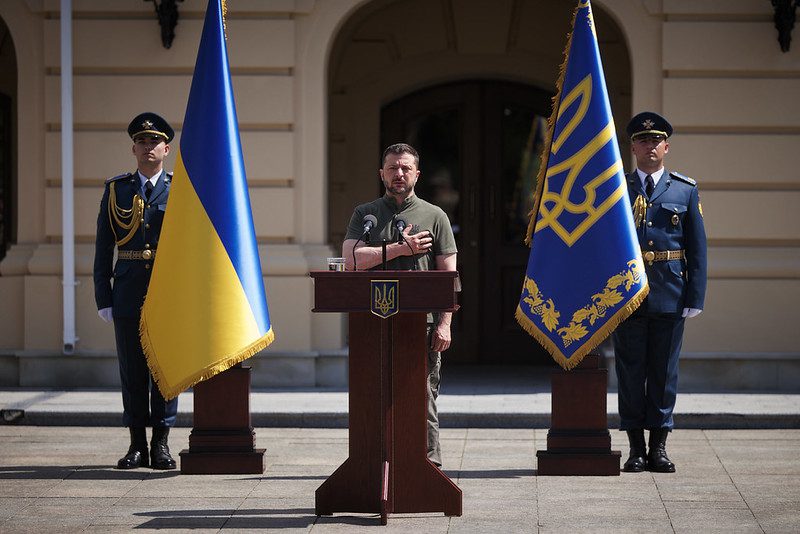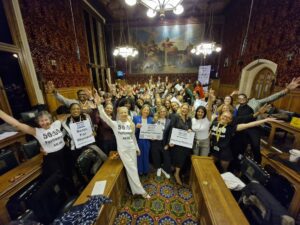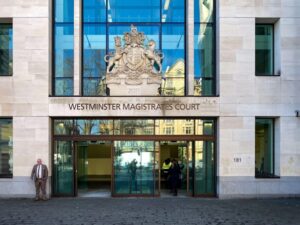The 28-point peace deal, reportedly drafted by US envoys including Secretary of State Marco Rubio and Special Envoy Steve Witkoff, has been leaked. This proposal presents a new and contentious framework for ending the conflict between Russia and Ukraine. It fundamentally shifts from prior Western policy by favouring a “frozen” conflict model and significant economic benefits over the complete restoration of Ukraine’s 1991 borders.
Territorial Concessions and Sovereignty
The document begins by affirming Ukraine’s sovereignty (Point 1), though this is immediately qualified. This affirmation is contingent on a comprehensive non-aggression agreement between Russia, Ukraine, and Europe to resolve all past ambiguities (Point 2).
The most contested element lies in the territorial settlement detailed in Point 21. It proposes that the United States and other parties recognise Crimea, Luhansk, and Donetsk as de facto Russian territory. Furthermore, the conflict in Kherson and Zaporizhzhia would be frozen along the existing line of contact, effectively legitimising Russia’s current military control.
In exchange, Russia would relinquish any other agreed territories it controls outside of these five named regions. Crucially, Ukrainian forces would be mandated to withdraw from any parts of the Donetsk Oblast they still hold. This area would then become a neutral, demilitarised buffer zone, internationally recognised as Russian Federation territory, which Russian forces would be barred from entering. Once this arrangement is agreed upon, both nations would commit not to change the borders by force (Point 22).
New Security Architecture
The plan outlines a rigorous new security structure designed to satisfy Moscow’s long-term demands while theoretically protecting Kyiv. It explicitly states that Russia is expected not to invade neighbouring countries, and NATO must commit to no further expansion (Point 3).
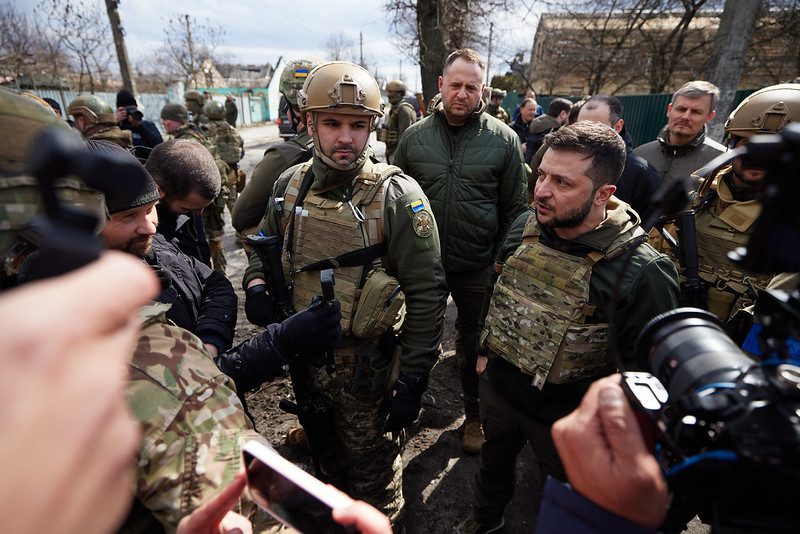
Image: President Zelenskyy in Bucha where Ukrainian Forces successfully pushed back Russian forces – President of Ukraine via flickr
A central pillar is the permanent neutralisation of Ukraine (Point 7). Ukraine must constitutionally forbid joining NATO, and NATO must reciprocate by including a provision in its statutes permanently barring Ukraine’s future admission. Complementing this, NATO would agree not to station troops in Ukraine (Point 8). The size of the Ukrainian Armed Forces would be strictly capped at 600,000 personnel, a reduction from their current force of 2.2 million (Point 6). As a measure of deterrence on the alliance’s eastern flank, European fighter jets would be stationed in Poland (Point 9).
The US would provide a decisive security guarantee for Ukraine (Point 10), receiving compensation for this commitment. If Russia invades Ukraine, all global sanctions will be reinstated, and all benefits of the deal, including the international recognition of the new territorial arrangements, will be revoked. Prior to full implementation, a US-mediated dialogue between Russia and NATO must resolve all security issues and create conditions for de-escalation (Point 4), ultimately ensuring Ukraine receives reliable security guarantees (Point 5).
Economic Integration and Reconstruction
The proposal offers a significant financial incentive for Ukraine and a pathway back to the global economy for Russia.
Ukraine would immediately become eligible for EU membership and receive short-term preferential access to the European market during its application process (Point 11). This is coupled with a massive global reconstruction package for Ukraine (Point 12), which includes establishing a Ukraine Development Fund focused on fast-growing sectors like technology, data centres, and artificial intelligence. The United States would also take the lead in rebuilding, developing, and modernising Ukraine’s gas infrastructure.
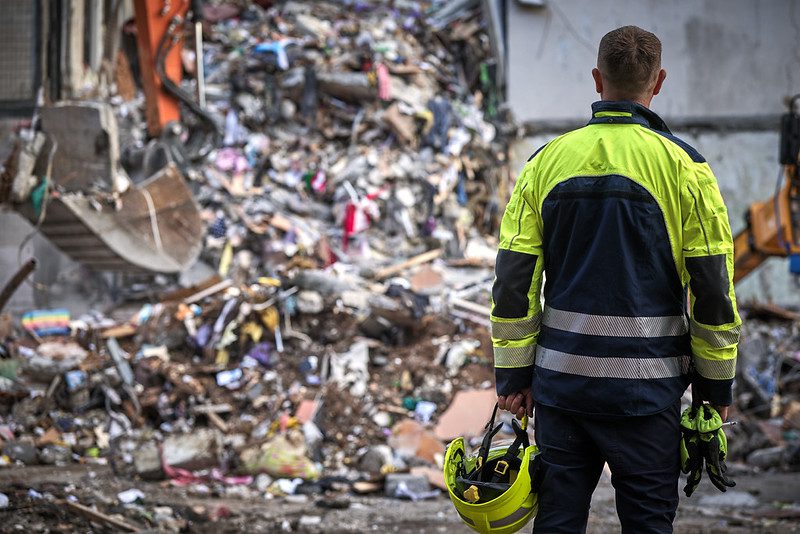
Image: The Impact Sites of Russian Ballistic Missile Strikes in Ukraine – President of Ukraine via Flickr
For Russia, the plan outlines a staged reintegration into the global economy (Point 13), with the lifting of sanctions discussed on a case-by-case basis. The US would commit to a long-term economic cooperation agreement with Russia in areas such as energy, natural resources, infrastructure, and Arctic rare earth metal extraction. In a major diplomatic gesture, Russia will also be invited to rejoin the G8.
The use of frozen funds is a key transactional element (Point 14): $100 billion in frozen Russian assets will be invested in a US-led effort for Ukraine’s reconstruction, with the US receiving 50 per cent of the profits. Europe is then expected to contribute an additional $100 billion to this reconstruction fund. The remaining frozen European funds will be unfrozen, and the remainder of frozen Russian assets will be invested in a joint US-Russian investment vehicle intended to strengthen ties and create a disincentive against future conflict.
Governance, Culture, and Final Amnesty
The final points address mechanisms for concluding the conflict and ensuring enforcement. The United States and Russia would agree to extend treaties on the non-proliferation and control of nuclear weapons, including the START I Treaty (Point 17), and Ukraine agrees to remain a non-nuclear state (Point 18). Russia would formally enshrine in law its policy of non-aggression towards Europe and Ukraine (Point 16).
The Zaporizhzhia Nuclear Power Plant would be relaunched under IAEA supervision, with the electricity produced distributed equally, 50:50, between Russia and Ukraine (Point 19).
Regarding social and cultural issues (Point 20), both countries commit to educational programmes promoting understanding and tolerance. Specifically, Ukraine will adopt EU rules on religious tolerance and the protection of linguistic minorities, and both sides will abolish discriminatory measures against media and education. Crucially, all Nazi ideology and activities must be rejected and prohibited.

Image: Military and Civilian personnel exchange in Russia where 390 people were returned home to Ukraine – President of Ukraine via Flickr
A humanitarian committee will be established (Point 24) to resolve outstanding issues, ensuring the exchange of all remaining prisoners and bodies on an ‘all for all’ basis, the return of civilian detainees and hostages (including children), and the implementation of a family reunification programme. Furthermore, Russia agrees not to impede Ukraine’s commercial use of the Dnieper River, and agreements will be reached on the free transport of grain across the Black Sea (Point 23).
Finally, once the agreement is codified, Ukraine will hold elections in 100 days (Point 25), and all parties involved in the conflict will receive full amnesty for their actions during the war (Point 26). The entire agreement will be legally binding, with its implementation monitored and guaranteed by a Peace Council, headed by President Trump, where sanctions will be imposed for violations (Point 27). The ceasefire will take effect immediately after both sides retreat to agreed points to begin implementation (Point 28).
Ukrainian and European Response
Shortly after the deal was proposed, Ukraine’s President Zelenskyy held a call with British Prime Minister Keir Starmer, French President Emmanuel Macron, and German Chancellor Friedrich Merz. Following this, President Zelenskyy confirmed that any response to the deal would be coordinated with these three European nations. France and the UK have led the support efforts throughout the conflict through the Coalition of the Willing and must now stand behind Ukraine as it negotiates the end of it. While the EU stated that Russia has “no right” to concessions from Ukraine, it stressed that the terms of any peace agreement are ultimately for Ukraine to decide, indicating the ball is now firmly in Kyiv’s court.
Despite the damaging nature of the deal for Ukraine, it is in a difficult position, with the US reportedly threatening to halt arms and intelligence support for the war effort. While Ukraine may seek to negotiate the deal, the scope for this is likely limited by Russia’s stated ambitions. Washington has set a deadline for Thursday 27 November, further intensifying the pressure on Kyiv.
Featured Image via President of Ukraine via Flickr

